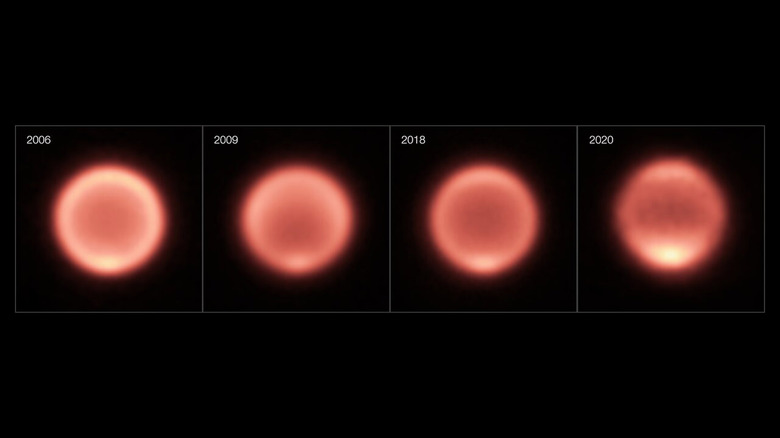A New Mystery On Neptune Has Astronomers Baffled
Neptune is located almost 2.8 billion miles from the Sun. As such, the planet is known for its exceptionally long orbit time. In fact, its journey around the Sun takes roughly 165 Earth years. Because the orbit takes so long, seasons on Neptune last over 40 Earth years. Right now Neptune's southern hemisphere is in the middle of a four-decade-long summer. Despite that, an unprecedented cooling in Neptune's temperatures has scientists scratching their heads.
Read about: A 4 billion-year-old comet 80 miles wide is headed toward Earth
Changes in Neptune’s temperatures have scientists baffled
Neptune is full of mysteries. Previously, scientists discovered an intriguing dark spot on Neptune. We've also witnessed storms doing unexpected things on the planet. Now, though, fluctuations in Neptune's temperatures have raised even more questions about the planet.
Astronomers published a new study on the changes. In the study, the scientists compiled over 17 years' worth of Neptune's temperature readings. Instead of warming up, though, the astronomers noticed that the temperature dropped a global average of 8 degrees Celsius between 2003 and 2018.
"This change was unexpected," Michael Roman, a planetary scientist from the University of Leicester in the UK shared in a statement. "Since we have been observing Neptune during its early southern summer, we expected temperatures to be slowly growing warmer, not colder."
Of course, gathering data about Neptune's temperatures isn't easy. A big part of that is because of how far away the planet is from Earth. Additionally, the technique we use to study it has only been around since the turn of the century. As such, we have a limited pool of data to build off of. Currently, astronomers use the VLT Imager and Spectrometer for mid-Infrared (VISIR) to gather temperate-based information.
VISIR is part of the European Southern Observatory's Very Large Telescope (VLT). It reads temperature based on the level of infrared light emission. Roman and his team of scientists studied roughly 100 thermal observations to determine Neptune's temperature changes. VISIR is responsible for many of those readings. Others came from NASA'S Spitzer Space Telescope. Finally, others came from ground-based telescopes.
Why are temperatures fluctuating?
That's the real question that scientists are trying to answer. Not only did the temperatures fall from 2003 to 2018, but from 2018 to 2020, Neptune's temperatures rose rapidly by 11 degrees Celsius in the planet's south pole.
Because the temperature changes are so extreme, astronomers aren't really sure what caused the fluctuations. However, they say it could be due to changes in the planet's stratospheric chemistry. Random weather patterns, or even the planet's solar cycle, could be behind the changes.
Unfortunately, there are a lot of possible reasons that Neptune's temperatures have been fluctuating. If they want to find the answer, astronomers say they will need to observe the planet even more in the coming years.


